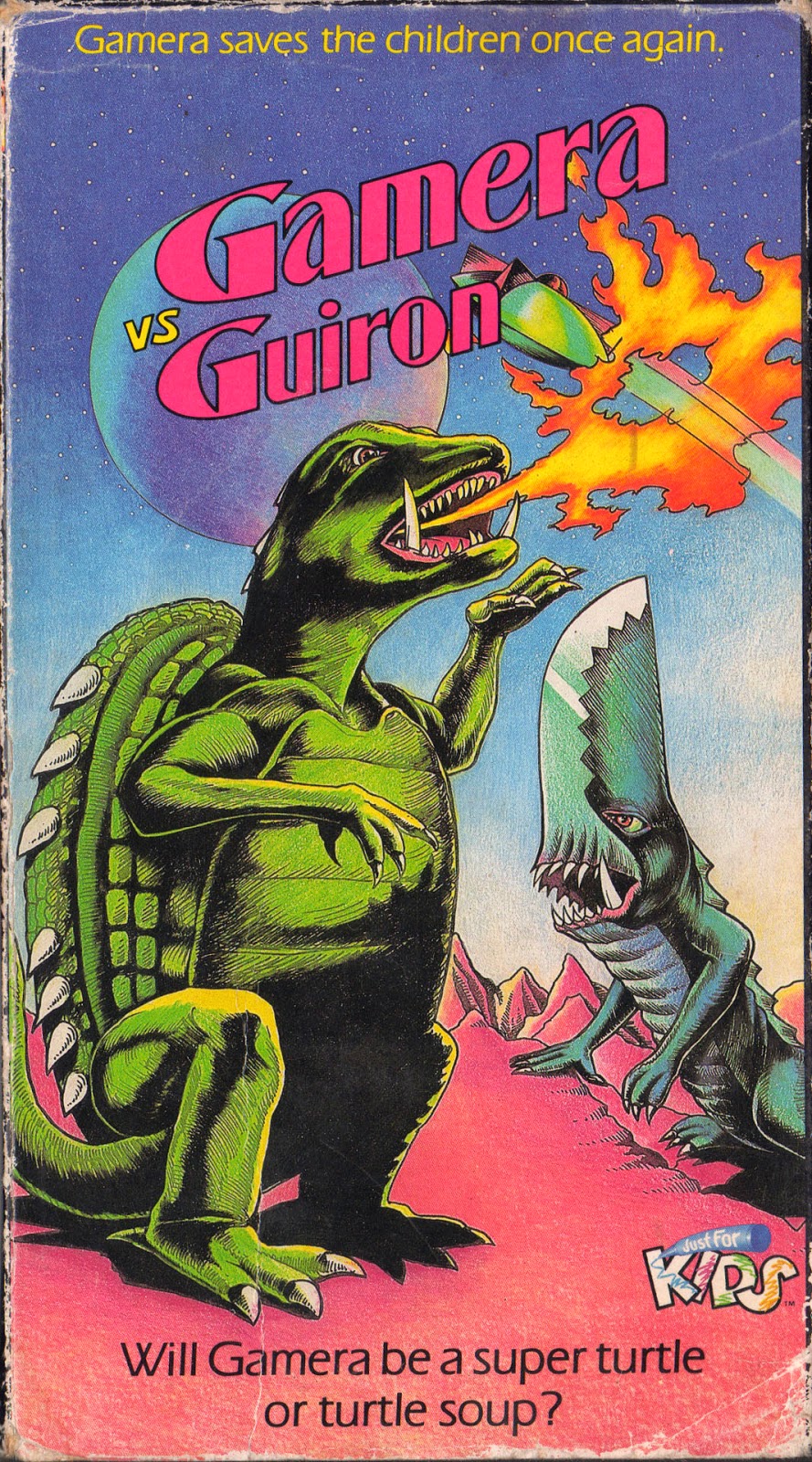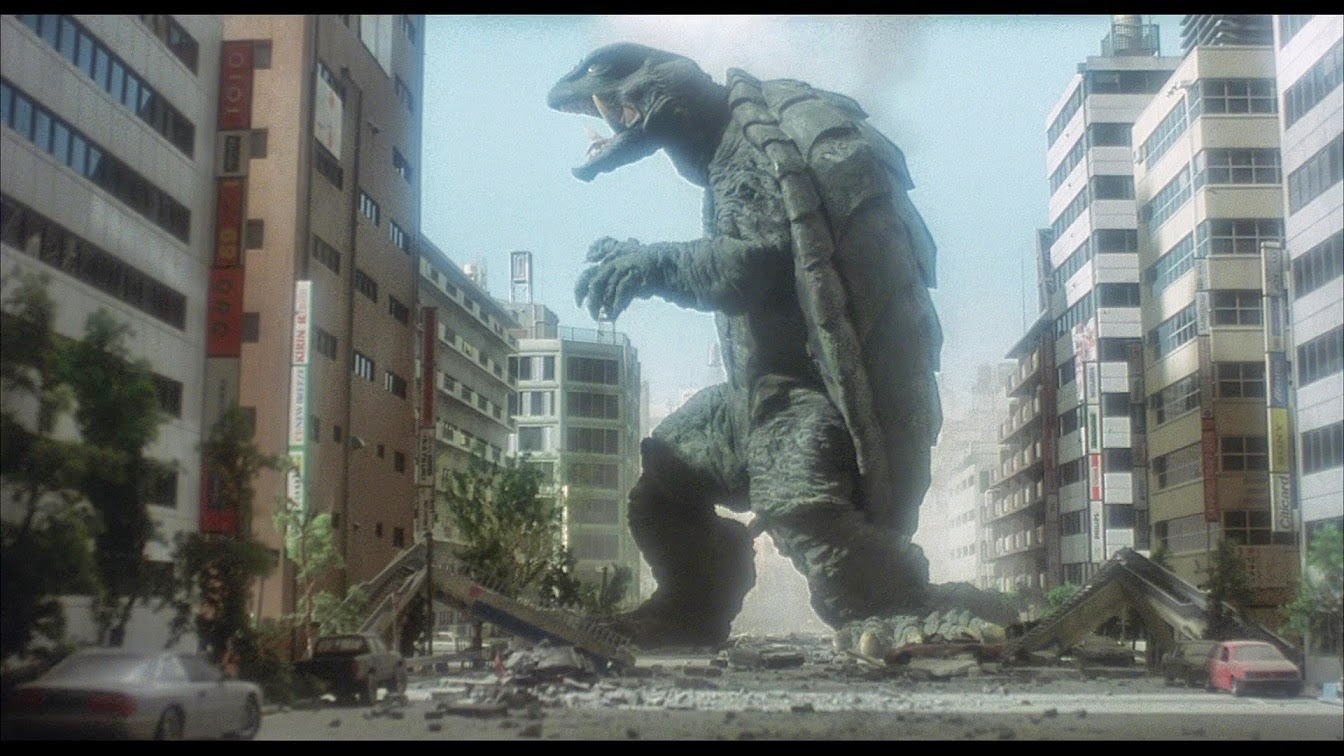"A race war on wheels!"
First, let me note how impressed I was with this video tape. The transfer was simply gorgeous and the print was in fantastic shape for such an obscure title as this.
That's one thing I really like about 80s video cassettes, the source prints for movies like this tend to look much better because the prints were much younger than they are now (and age has had time to rough up these things in the meanwhile). At the time, you could still dig up some really nice prints of some really obscure junk. Upon seeing how sharp this print was, I automatically granted the film some points of favor. It would have to be pretty bad for me not to have a little affection for it after seeing such a nice picture. I would like to acquire more tapes from Trend Video and see how they stack up.
This makes the fifth biker flick I'd seen at the time of writing this review. I really enjoyed two of them (The Hellcats, The Born Losers), and felt really let down by two others (Cycle Savages, The Wild Angels)*. Where does that leave Black Angels? Smack in the middle, really. It had some good elements and some bad elements.
[* I've since seen a few other films in the genre. Most have been pretty bland, but the occasional gem like THE WILD REBELS has also come my way.]
Like the worst of biker flicks, there was much meandering and seemingly endless filler material. Like the best of biker flicks, this one had a plot. Sort of. It doesn't demand a lot of space to review for that very reason.
The title refers not to a gang of black bikers, the Choppers, nor their white counterparts, Satan's Serpents. The Black Angels are actually the highway patrolmen who observe the doings of the gangs from a distance. One cop in particular has a plan to end the reign of lawless terror these gangs engage in, and he's planting the notion that the two gangs are headed for a race war. The bait set, he sits back and waits for both gangs to destroy one another. That's actually a pretty neat plot for one of these pictures.
Don't get the wrong impression, though, the main action all takes place within the last five minutes or so, it still takes 80 largely non-eventful minutes to reach the climax.
Mostly, we watch the misadventures of Chainer, leader of the Satan's Serpents. Playing Chainer, our star Des Roberts never really did anything else a lot of people have seen. He acted in something called The Demons, a witchcraft movie so obscure the IMDB doesn't have a year for it (though it seems to be on DVD...somewhere), then a homosexual hardcore flick called Dracula and the Boys! Then our current subject, and finally another Dracula movie. He plays the king of the undead himself in Guess What Happened to Count Dracula, and even worked on that film's soundtrack. I've not seen Guess What Happened to Count Dracula, but I do know Something Weird Video sells one their impressive double feature DVDs featuring the film. Other cast members here also turn up in the Dracula movie.
Roberts has that whole Peter Fonda thing down here, so that would seem to be why they cast him. He commands unquestioning respect and loyalty from his men, and his women. He's a jerk, but as the Leader you're forced to give him a little credit and respect, like some kind of (survival?) instinct.
Chainer's gang hangs out in a ghost town, and have a chained mountain lion in a barn! Why? We never really know why they have it. Maybe it wandered in by accident one day and they trapped it, thinking it a fun conversation piece?
Our actual plot revolves around Johnny Reb, a southern biker who wanders into town and hides from the fuzz in Chainer's ghost town. He's played by another unknown who also appeared in Guess What Happened to Count Dracula. Reb joins the Serpents, then starts spouting racist slurs when the gang stops off at a beer bar and are served by a black waitress. (He's from the south, you know, so obviously he's a racist. Such was the mandate of 70's exploitation movies.)
Chainer sets him straight, their beef with the Choppers is over turf, not color. "This country," Chainer sighs the film's best line, "its getting so you can't have a decent fight with a black man without somebody making it out to be about race."
Reb later picks up some "uppers" from a car in a dark parking lot, despite his claiming to be new in town he has not only found a supplier, but one who doesn't take money! Unfortunately, by the time Chainer figures this out, he and his gang have already taken Reb's little gift. They're downers, and everyone is now vulnerable.
Reb goes outside and rips off his confederate cap before signalling to the Choppers who are waiting on the hillside. He slips into a Choppers jacket. Questioned, Reb laughs "I'm black!" There's a line after this that may clear things up a bit, but I couldn't catch it due to the roaring motorcycles. (Is he supposed to be a light-skinned black man? An honorary Chopper, allowed to hang out with the cool kids after helping them destroy their enemies? Has he been dyed white?)
Although doped, Chainer and his men put up enough of a fight to kill everyone in both gangs. Then there's the now escaped mountain lion, who rushes out to chew one guy to death before moving on to another victim! Chainer and his opponent end up falling into a snake-pit!
The Black Angels pull up to observe their handiwork, then drive off knowing a threat to the community has been neutralized. Over the images of various white and black guys dead at each other's hands, we get a song about peace. How ironic, or tragic, or arty, or something. I don't know about you, but it makes me want to hug somebody.
Again, not gang-buster stuff, but mildly better than one usually expects from a biker flick. Although cheap, the film is technically well mounted. There are some familiar backdrops here, as one might expect from any California-filmed cheapie of the period. Amazingly, they avoid using Bronson Canyon entirely!
All this was directed by Laurence Merrick, who also helmed the aforementioned Des Roberts movies. The obscure beyond obscure The Demon, the hopefully lost Dracula and the Boys, this, and Guess What Happened to Count Dracula. His only other work is a 1973 documentary Manson, about the infamous cult-leader/killer. The Database notes that he was shot and killed in 1977, by a deranged stalker, lending a darkly ironic touch to his body of film-work involving killers, psychos, and vampires.























































































